What is Modern Day Slavery?
When Did Slavery End? It Hasn’t.
Modern Day Slavery Explained.
Modern Day Slavery is real slavery: where people are held against their will, under violence or threat of violence, and unable to walk away. They are either never paid or paid irregularly, either in the form of food or money, the sum of which is far below any minimum wage standards; typically they are paid only enough to survive another day. They are trapped in brothels, factories, mines, farm fields, and many more industries. Women and girls account for 71 per cent of all victims of modern slavery. That means one in every 130 women and girls is living in modern slavery. (1)
Modern day slavery exists in many forms and is perpetuated in every country around the world, even yours. Let’s take a look at common forms of modern day slavery and how they differ from each other.
At this present moment, there are more people suffering under slavery than at any other time in history. The Global Slavery Index (GSI) estimates that more than 50 million people are currently trapped in modern day slavery. (2)
It is truly shocking to grapple with the reality that people across the globe are still in slavery. Yet, why does it seem like nobody is talking about it?
The operations of modern day slavery are usually hidden, secretive, and often ignored in the arena of public concern. Corruption coupled with lack of resources, education, and recognition of peoples’ rights all perpetuate a system and cycle of slavery.
There are many terms people use when talking about modern day slavery, like debt bondage, forced child labor, attached labor and many more. If it’s all slavery, then why are there so many different words for it? As international law has developed over decades and more people are becoming aware of the fact that slavery still exists, different international and national bodies have created terminology as their understanding develops. But make no mistake, each term below refers to real slavery.
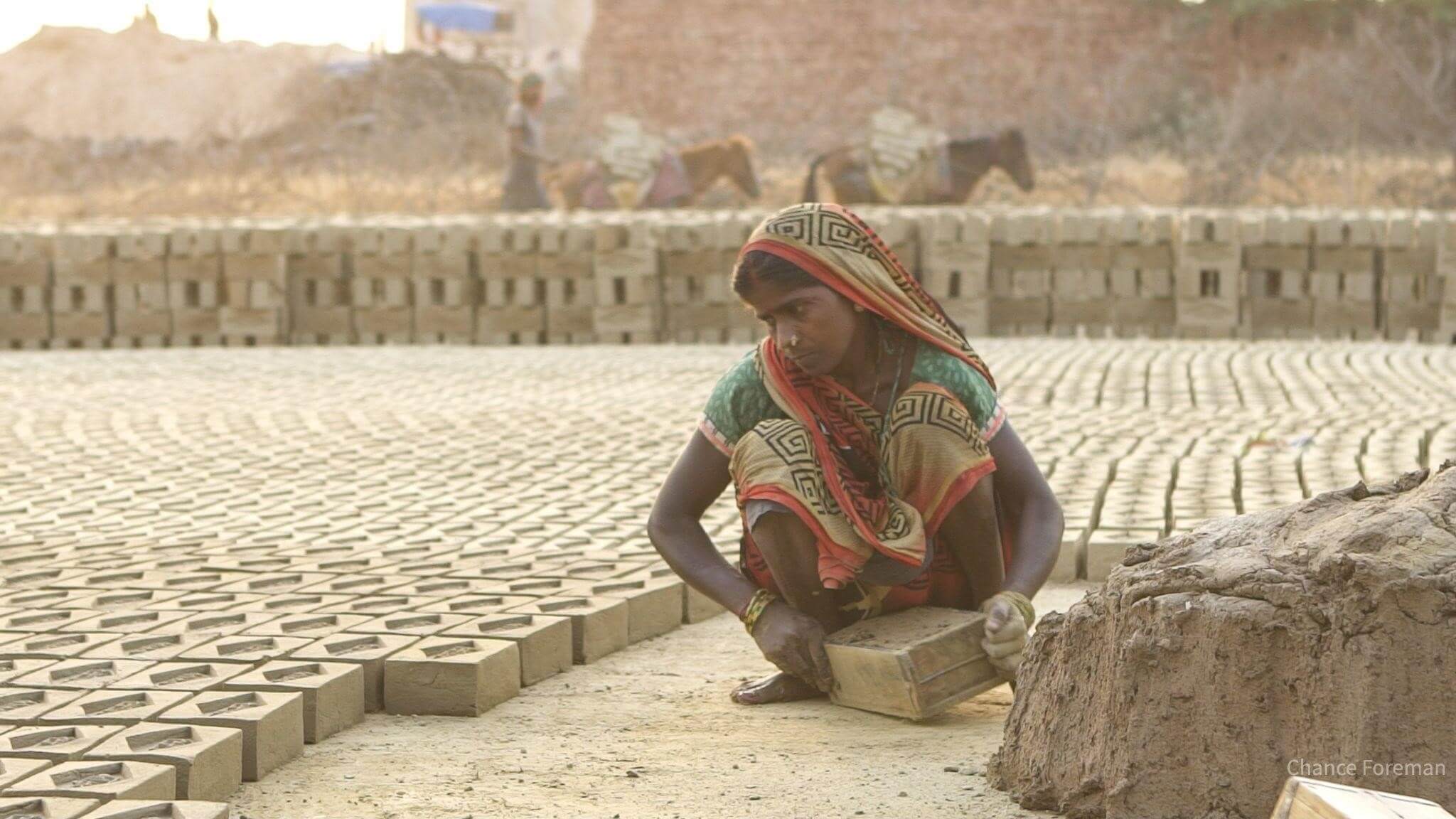
Forms of Modern Day Slavery: Forced Labor and Child Slavery.
Defining Human Trafficking
Human Trafficking is a term often used to refer to the modern day slave trade. However, the Palermo Protocol (3), an international legal document, broadens the definition of human trafficking to include all forms of exploitation of humans for sex and labor.
In effect, the broadened definition of human trafficking includes all forms of modern day slavery:
“The recruitment, transportation, transfer, harbouring or receipt of persons, by means of the threat or use of force or other forms of coercion, of abduction, of fraud, of deception, of the abuse of power or of a position of vulnerability or of the giving or receiving of payments or benefits to achieve the consent of a person having control over another person, for the purpose of exploitation.”
The Protocol further defines exploitation as:
“At a minimum, the exploitation of the prostitution of others or other forms of sexual exploitation, forced labour or services, slavery or practices similar to slavery, servitude or the removal of organs.”
Contrary to popular belief, the United States does not limit the definition of human trafficking to the crossing of borders. Rather, simply put, any act in which a trafficker uses force, fraud, or coercion to exploit and profit from the labor or commercial sex of a child or nonconsenting adult, is human trafficking. Then, the U.S. breaks human trafficking (4) down further into two different forms, forced labor and sex trafficking, which each have different requirements to form a violation of human trafficking.
Often there is an assumption that human trafficking involves only the sexual slavery of women and girls, but that is incorrect. Human trafficking can happen anywhere, from agricultural fields to restaurants to private homes to child marriage to forcing people to be mules for the drug trade.
Human trafficking exists in virtually every country, and trans-nationally across multiple countries. According to UNICEF USA, “Human trafficking is the 2nd largest criminal industry in the world, reaping an estimated $32 billion in the trade of human beings,” (5) putting it just behind the drug trade. Children, minority communities, and migrants are especially at risk to extreme forms of exploitation, including slavery and trafficking.
Forced Labor
Forced labor is any type of work that is performed involuntarily and under the threat of any penalty, according to the International Labor Organization (ILO). (6) The Global Slavery Index estimates that there are 24.9 million people trapped in forced labor around the world (2) and generates huge profits which go directly into the hands of exploiters.
Laborers are often illegally forced into work at the onset. Those who have been exploited through forced labor often enter into work seemingly voluntarily, though a closer look into their circumstances reveals that their agreement to work, or consent, was uninformed; they are predominantly illiterate and innumerate. Laborers will often start work with eight hour days, which quickly turn into fifteen plus hour days. When forced laborers decide they want to leave, they are told they cannot or are threatened with physical violence or other means of intimidation.
One common form of forced labor is known as debt bondage or debt bondage slavery. It works like this: the slave owner starts with offering a loan in the form of literal money, food, medicine needed to survive, or tools to work. The “debt” aspect of debt bondage refers to an illegally high interest rate that laborers either “inherit” from their family members or involuntarily take on when they accept a loan from the slave holder. By establishing an illegally and impossibly high interest rate, slave holders effectively ensure that a person trapped in the cycle of debt bondage can never pay off their “debts,” no matter how many hours they work.
Also, people in debt bondage slavery are not allowed to work for anyone else. Since they don’t get paid by the slaveholder and they are not allowed to earn money any other way, there is literally no way to pay off the debt. People in debt bondage slavery often do not know this is against the law, and the obligation they feel to repay this bogus debt is one of the things that keeps them trapped. Slavery expert and Voices4Freedom International Advisory Board Member, Kevin Bales CMG explains, all of these factors form a “chain around the brain” that keeps them enslaved. (7)
Child Slavery
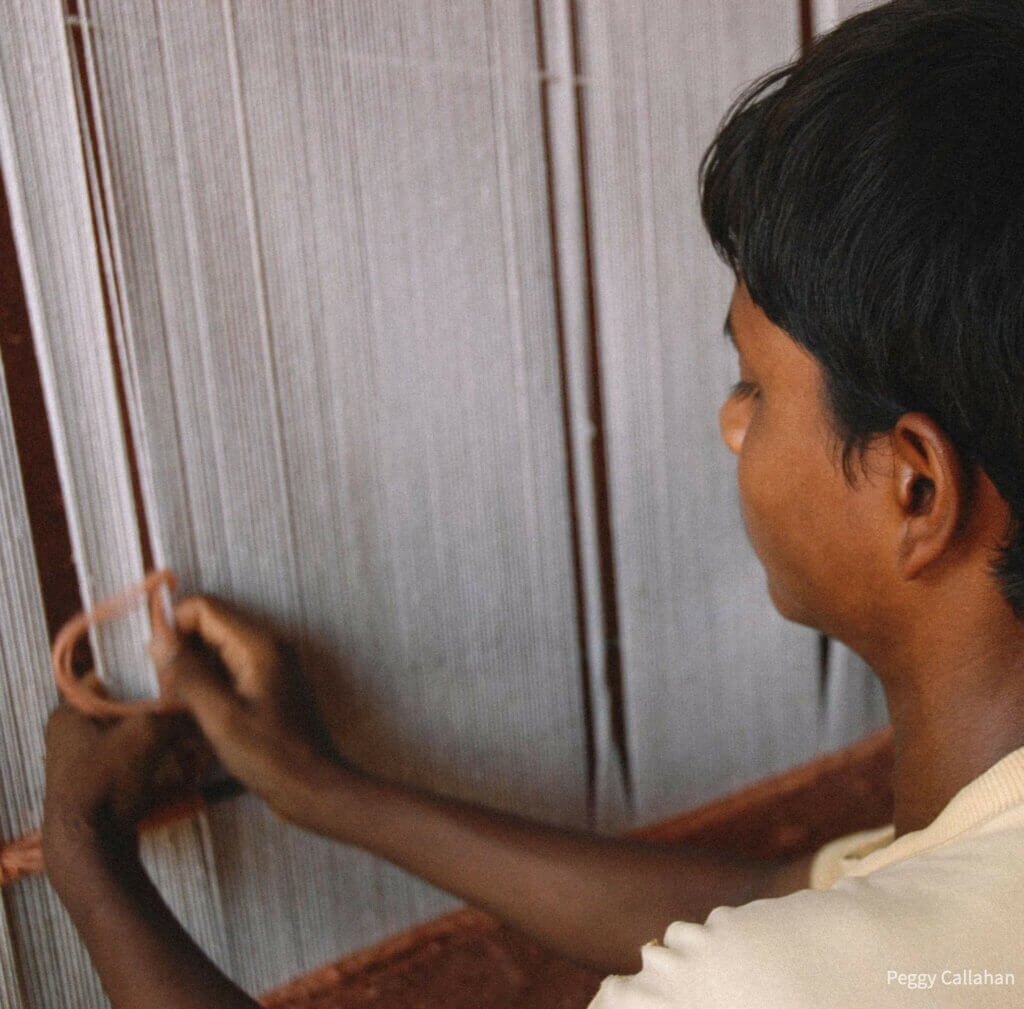
Child slavery is also known as forced child labor, which is defined as work done by children which, as phrased by the ILO, deprives them of “their childhood, their potential and their dignity, and that is harmful to their physical and mental development,” (8) the latter most of which is often the consequence of an interference or deprivation of schooling. The ILO estimates that one third of the 152 million children forced into child labor (9) are kept from attending school. (10) Many children forced to work do so in extremely hazardous and toxic conditions.
Some examples of child slavery include: brick kiln workers, subjected to work in a small space full of dust exceeding 120 degrees fahrenheit; child soldiers, forced to fight and die in guerilla warfare; child marriage, where families exchange their daughter for a dowry due to pressures from poverty, cultural, and religious norms; carpet making, where small, nimble fingers are at a premium. It is also common for child laborers to be trafficked for sex and other forms of labor, and always for profit.
Is all child labor actually slavery? No. If a child is working, either for their family member or for someone else, but still gets to go to school, is treated fairly and paid a fair wage, it is not child slavery. Many people feel strongly that children should not work at all, no matter how well they are treated. This is a separate debate that is not about slavery.
All of these various forms of modern day slavery exist to achieve the same goal: personal or capital gain through exploitation of another human being.
Modern Slavery & Environmental Sustainability
An increase in environmental protection regulations doesn’t translate to a more protected earth. Rather, environmentally destructive practices continue illegally with slave labor. Slavery and environmental damage are inextricably related and their erradication is tied together. To end environmental destruction, we have to end slavery.
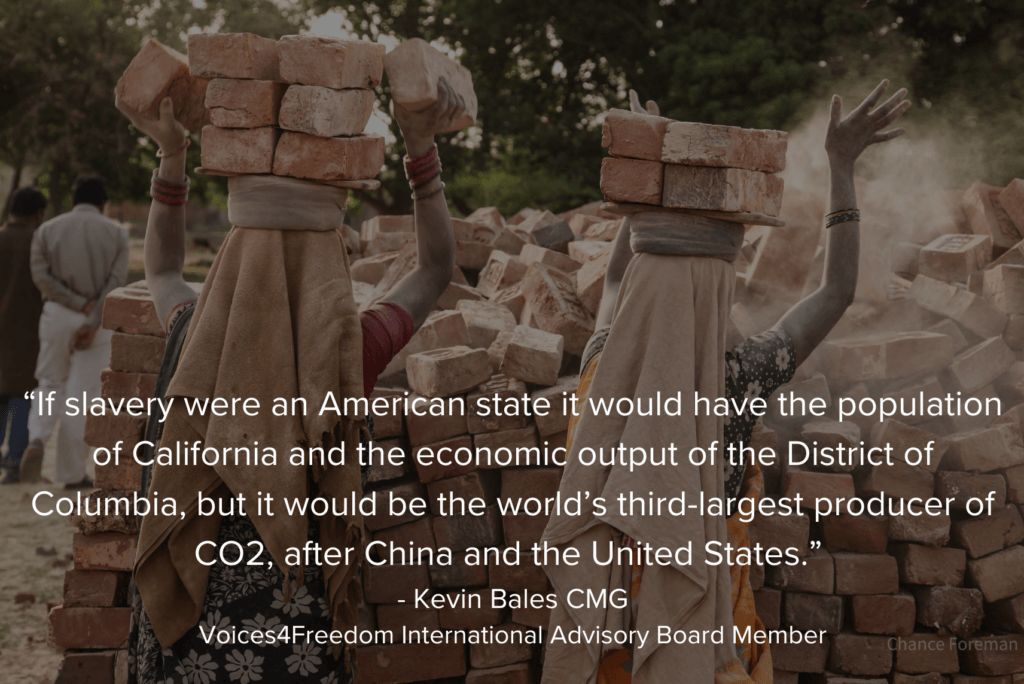
Modern Slavery in Africa, India and the United States
Nations throughout Africa, the Middle East and Asia represent the highest rates of slavery. However, modern day slavery is also present in developed countries including the United States.
Most people around the world engage with slavery every day without realizing it. How is that? Slavery exists in the chain of production of nearly all laptops and mobile phones, and a lot of apparel, fish, coffee, chocolate, and jewelry. Most products made in compliance with ethical labor (and environmental) standards are far more expensive to consumers. Unfortunately, consumers are often tempted to choose the cheapest product, regardless of who is exploited as a result.
Modern Slavery in India
According to the Global Slavery Index, there were an estimated 7,989,000 people enslaved in India in 2018. Forced labor, child exploitation, trafficking and slavery are all criminalized by the Indian government. However, certain forms of slavery such as child marriage are permitted, so long as it doesn’t involve kidnapping. Similarly, there are no formal laws against children fighting in armed conflicts.
India is the world’s largest granite producer, having produced 35,342 million tons in 2013. (7) In 2017 India made $738,731,000 in profits from exporting Granite, Basalt and Sandstone. (11) However, the markup is incredible. While granite countertops run from $2,000 to $8,000, the price Indian exporters charge for red granite for example is just $5 per $15, or about $100 for a full granite kitchen.
To expose granite quarries, entire forests, along with their soil, are done away with. And once the quarry has been worked out and all the granite has been extracted, what remains is an abandoned wasteland, useless as forest or farmland. (7) Because granite has to be removed from quarries in large thin slabs, one can’t use dynamite or bulldozers to speed up the process; rather, people have to go in with drills and chisels, hammers and crowbars to gently work the granite out of the ground. And the most cost effective labor force, slavery, is put to work. (7) Bonded labor slavery is the name of the game here.
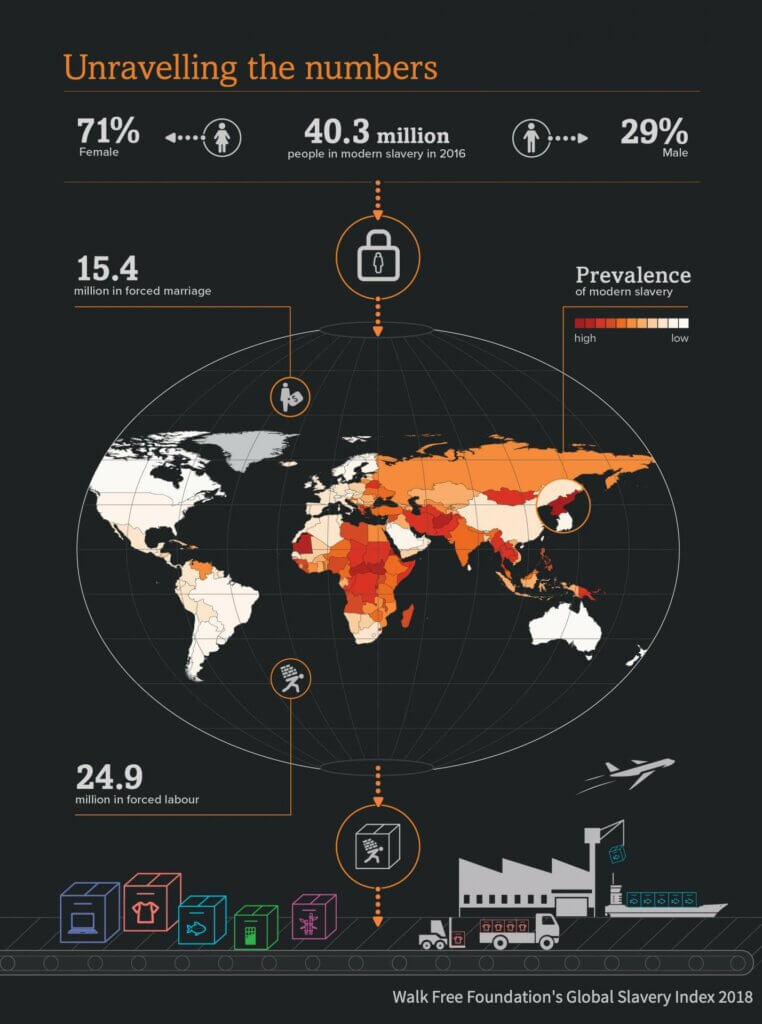 Forced sexual exploitation is another emerging trend across India’s open and unmanned international borders. In 2016, 126 young females were trafficked into the northeastern state of Assam. They were lured in by traffickers offering them the promise of a good job, but were then forced into sexual slavery. In another example, Nepali women, who are highly valued in India where they are seen as very beautiful, are lured or traded across the border into sexual slavery. If they are ever able to attain their freedom, they usually cannot return home to Nepal because they have brought shame to their families — their families will be kicked out of their homes and villages as a result, so the enslaved women are trapped.
Forced sexual exploitation is another emerging trend across India’s open and unmanned international borders. In 2016, 126 young females were trafficked into the northeastern state of Assam. They were lured in by traffickers offering them the promise of a good job, but were then forced into sexual slavery. In another example, Nepali women, who are highly valued in India where they are seen as very beautiful, are lured or traded across the border into sexual slavery. If they are ever able to attain their freedom, they usually cannot return home to Nepal because they have brought shame to their families — their families will be kicked out of their homes and villages as a result, so the enslaved women are trapped.
Modern Slavery in the United States
The same tactics of force, fraud, and coercion that are used to exploit people around the world are also used in the United States. Of every 1,000 people in the United States, 1.3 are living in modern slavery. Modern slavery is seen in jobs like domestic work; agriculture and farm work; traveling sales crews; restaurant or food services; and health and beauty services. Up to 30 percent of farmworker families are living below the federal poverty line, experiencing situations of modern slavery where they are held against their will, through the use or threat of violence, and forced to work for little or no money. (12) Thus, the fruits, vegetables, and meats we consume are often the product of slave labor happening in the United States.
Agricultural slavery is concentrated around the U.S. borders, where predominantly people of color are forced to work through methods of coercion and threats of physical or sexual violence and deportation. These laborers are given no pay, or only enough pay to allow them to keep themselves from starving, so they can keep working.
Women and children, in addition to men, can be trapped into forced labor. Though all genders can experience sexual violence in their workplace, women in forced labor are more likely to be victims of sexual exploitation. In effect, sexual exploitation enters into all forms of slavery.
Consumers in the United States buy into slavery every day. The United States imports over $144 billion dollars worth of products created by forced labor or at-risk populations, more than any other country in the world. (13)
Modern Slavery in Africa
Slavery is so widespread in Africa that almost every product produced through slavery can be traced at one part or another back to the continent. According to GSI, 7.6 of every 1,000 people in the entire continent of Africa were living in modern day slavery in 2018. The same study reveals that some of the most common forms of slavery in Africa are forced marriage (with 4.8 victims per 1,000 people) and forced labor (with 2.8 victims per 1,000 people). It is estimated that there are 400,000 people experiencing sexual exploitation.
The reach of modern day slavery is widespread and pervasive. Slavery exists in every country in one way or another. With the realities of mass global trade and commerce, as long as slavery still exists in any country, it is inevitable that products made by forced labor enter into the global mainstream economy.
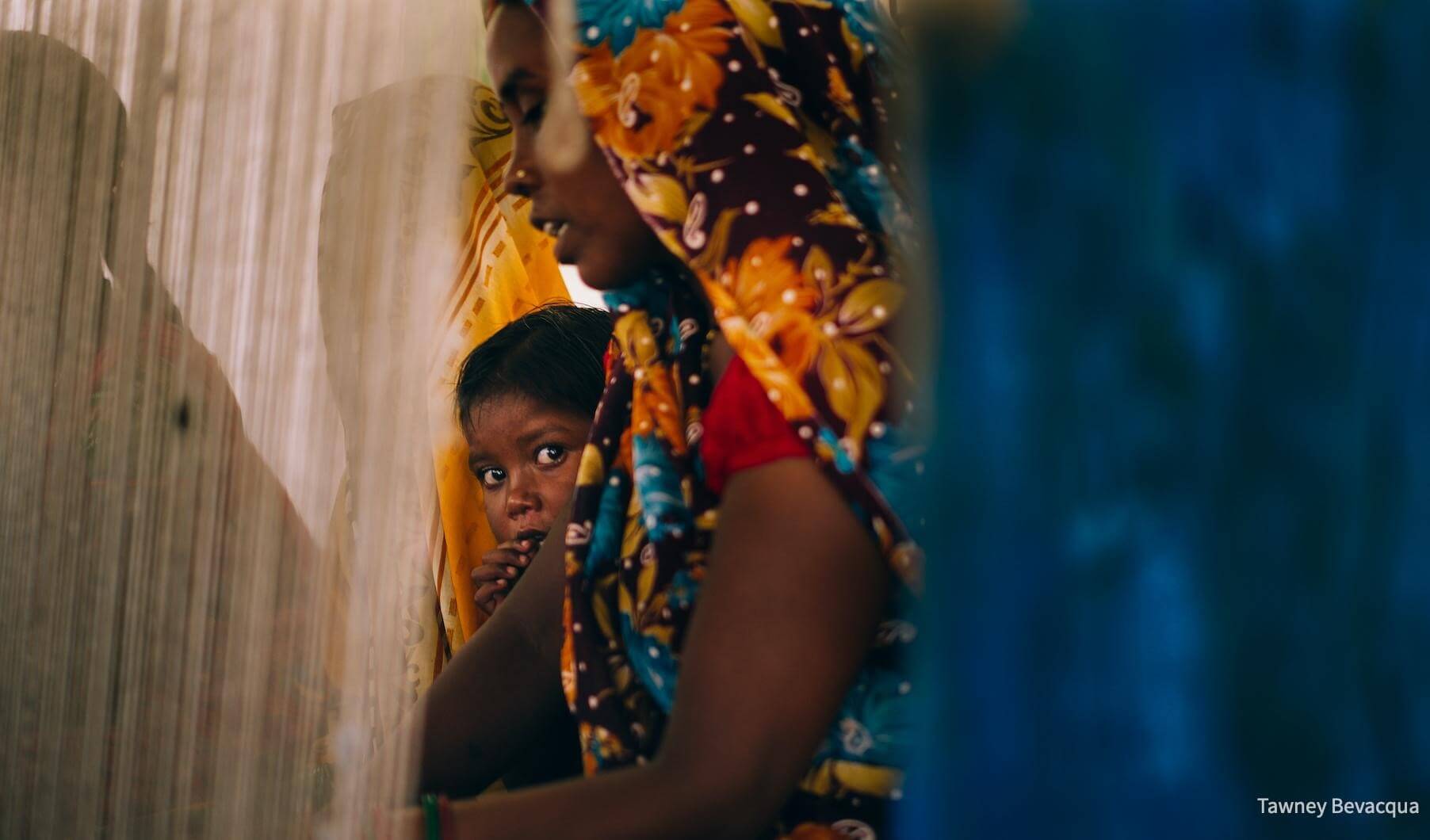
What Causes Modern Day Slavery?
We at Voices4Freedom know that to achieve our goal of eradicating modern slavery in our lifetime, we must keep in mind what causes it. It begins with degrading the value of human life. A lethal combination of overpopulation, poverty and corruption devalues and dehumanizes entire populations of people – making their lives “cheap” and “disposable.” This opens up the possibility of exploitation with no regard to human rights.
Corruption and apathy play big roles in why a government may remain complicit in the fight against slavery. Powerful entities that profit from modern day slavery often pressure and bribe governments and law enforcement so that they can continue exploiting without repurcusions. Many governments perpetuate the issue by dismissing the reality of slavery in their country. A new study conducted by the University of Nottingham’s Rights Lab revealed that 94 countries have no criminal law against slavery. (14)
The hidden nature of modern day slavery presents many obstacles. What may look like a legitimate job or enterprise could in fact be debt bondage slavery, forced labor or one of the many different types of modern day slavery. Without the right knowledge and toolset, modern day slavery can exist right under our noses – even in our own communities. Some governments argue that their inaction stems from an inability, usually due to a lack of resources, to identify where or how this problem is occuring. Likewise, people who are enslaved may not be able to even recognize that they are being exploited. They may believe the terms of their employment are legitimate and don’t recognize the methods of force, fraud or coercion that were used to enslave them.
Racism, xenophobia, climate change, and civil unrest all perpetuate pre-existing vulnerabilities and create new ones which increase the potential for exploitation. In the case of climate refugees and other refugees, slave holders are tricking these victims into slavery in exchange for their relocation.
The structural and cultural racism which have existed throughout history are still at play in modern day slavery in the obvious, and insidious, ways. More obviously, minority groups and vulnerable people have continued to be targeted as victims of modern day slavery. However, even the popular anti-modern day slavery efforts usually have an element of structural and cultural racism, in the form of white savior complex. When organizations “helicopter in” for “rescue missions,” such efforts rarely address the factors which make people vulnerable to modern day slavery in the first place. Sustainable freedom requires a rights education, vocational skills training, a psychological healing, and empowerment to believe in their right to be free.
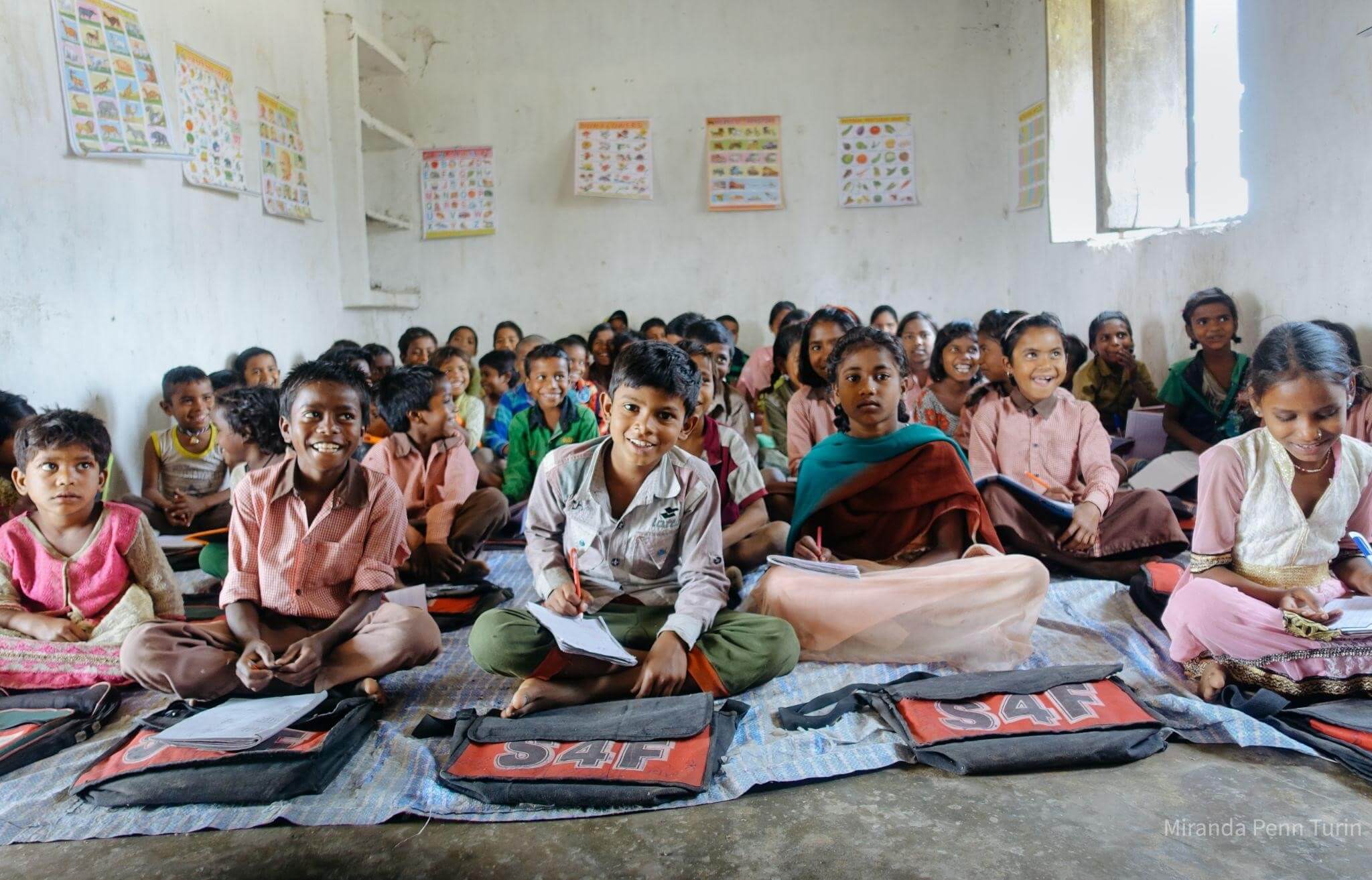
Where Do We Start?
The extensive reach of modern day slavery may make it seem like an insurmountable problem. But, in the part of the world where slavery is most pervasive, education and empowerment is a real, consistent, and sustainable solution. Let us introduce you to Schools4Freedom.
Schools4Freedom helps entire villages free themselves from slavery by educating and empowering them to break free and stay free. Entire communities come to understand the legal system and how to navigate it. They learn about the life changing government programs they never knew they were entitled to. Equipped with a knowledge of their rights and inherent self-worth, they also learn how to overcome the obstacles that racism, xenophobia, and corruption inevitably bring, and ultimately confront their slave owners and free themselves. Forever.
In three years, 100-200 people in a village come to sustainable freedom; every child is caught up to grade level and has transitioned into the local government school; every child and parent has gained enough confidence to demand equal treatment, even when caste prejudice is rampant; and every person in the village is FREE, knows their rights, and is supporting themselves financially, so they won’t fall prey to the slaveholder again. Schools4Freedom Villages join a federation of freed villages so they can support each other when challenges arise and help others to freedom.
These schools are the catalyst that brings entire villages to sustainable freedom!
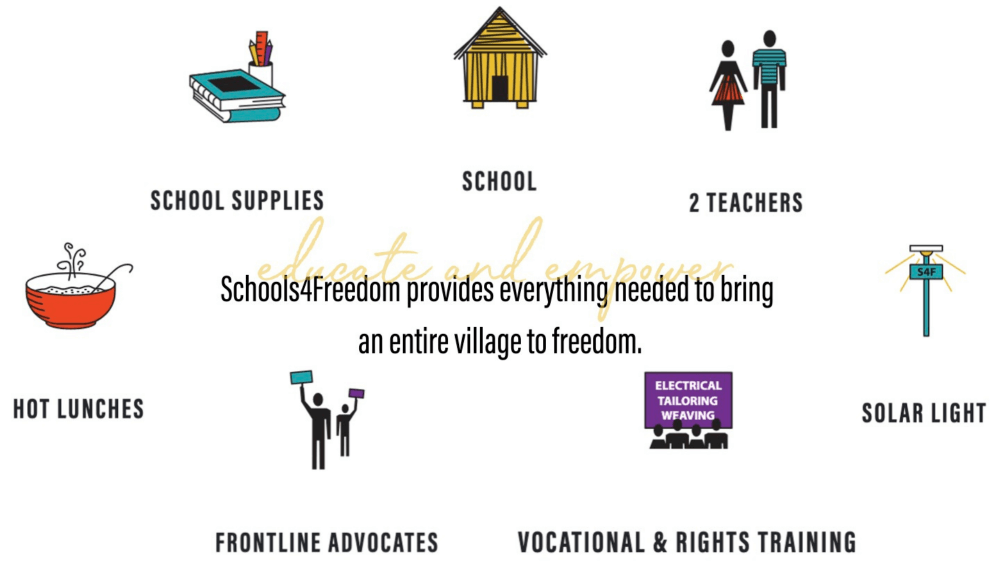
Our solution starts with two teachers gathering kids under a tree to learn. While this seems innocuous to the slaveholder, it’s actually a Trojan horse for life-changing ideas. A single School4Freedom provides everything needed to bring an entire village to sustainable freedom in three years flat.
Each village Voices4Freedom works in receives a school building, which is temporary by design. Within three years of our arrival, all of the village children are caught up to grade level and ready to transition to a government-run school. The school is staffed with two teachers who are culturally aware of the local challenges faced by their students. The team is always made up of one female and one male teacher in order to model gender equality and compassionate and fair leadership. Each student then gets their very own school supplies. Simple pencils and paper that the children own themselves have never been more excitedly received. Hot lunches keep students nourished and focused during the school day. In the early days, this is the only full meal the kids receive. When some of the parents are reluctant to risk the wrath of the slaveholder by sending their children to school, the promise of a nutritious meal awaiting their starving children gives them confidence. A solar light is installed in every Schools4Freedom village to supply light for studying at night. It also helps to prevent rape and snakebites.
Local community frontline advocates work with the villagers to advocate for their rights to the government. These advocates are always from the region, speak the local dialects, and know how to help the villages shift the levers of power in favor of justice. They help each villager access 19 government assistance programs that they are entitled to, but never knew existed. They’re also often the first humans to treat the villagers with respect. Each villager is regarded as fully capable of freeing themselves and building a meaningful life in sustainable freedom. To empower villagers so that they begin to believe this themselves, our frontline advocates also provide vocational and rights training. Through this training, every adult learns how to and successfully secures reliable paid work or starts their own small business in an industry with high local demand. Each person learns their rights and how to advocate for themselves so they never fall prey to abuse again – by traffickers, slaveholders, or their own government. That’s between 110 and 190 people per village who’ve come to sustainable freedom over three years with their children being educated. Our processes rely on villagers working together and supporting one another, which builds group and individual resiliency.
So far, Voices4Freedom has supported over 3,993 people to sustainable freedom, educated 1,983 children and established 43 transitional schools in India.
With your help we can accomplish our mission to end slavery in our lifetime. We invite you to learn more about our freedom initiatives and join us today in the fight for freedom!
Article Footnotes
1. Stacked Odds – One in every 130 females globally is living in modern slavery https://www.walkfree.org/reports/stacked-odds/
2. GSI 2018 Findings – Highlights https://www.globalslaveryindex.org/2018/findings/highlights/
3. Protocol to Prevent, Suppress and Punish Trafficking in Persons Especially Women and Children, supplementing the United Nations Convention against Transnational Organized Crime https://www.ohchr.org/EN/ProfessionalInterest/Pages/ProtocolTraffickingInPersons.aspx
4. Understanding Human Trafficking https://www.state.gov/what-is-trafficking-in-persons/
5. Unicef USA – End Trafficking https://www.unicefusa.org/sites/default/files/assets/pdf/End-Child-Trafficking-One-Pager.pdf
6. International Labour Organization – What is forced labour, modern slavery and human trafficking https://www.ilo.org/global/topics/forced-labour/definition/lang–en/index.htm
7. Blood and Earth by Kevin Bales http://www.kevinbales.net/
8. International Labour Organization – What is child labour (IPEC) https://www.ilo.org/ipec/facts/lang–en/index.htm
9. Global Estimates of Child Labour https://www.alliance87.org/global_estimates_of_child_labour-results_and_trends_2012-2016.pdf
10. International Labour Organization – Over one third of children in child labour are out of school https://www.ilo.org/ipec/ChildlabourstatisticsSIMPOC/WCMS_817698/lang–en/index.htm
11. Top Exporters of Granite, Basalt, And Sandstone https://www.worldatlas.com/articles/top-exporters-of-granite-basalt-and-sandstone.html
12. GSI 2018 Findings – Country Studies – United States https://www.globalslaveryindex.org/2018/findings/country-studies/united-states/
13. The Human Trafficking Legal Center – Importing Freedom https://www.htlegalcenter.org/wp-content/uploads/Importing-Freedom-Using-the-U.S.-Tariff-Act-to-Combat-Forced-Labor-in-Supply-Chains_FINAL.pdf
14. University of Nottingham – Right Lab https://www.nottingham.ac.uk/research/beacons-of-excellence/rights-lab/index.aspx


